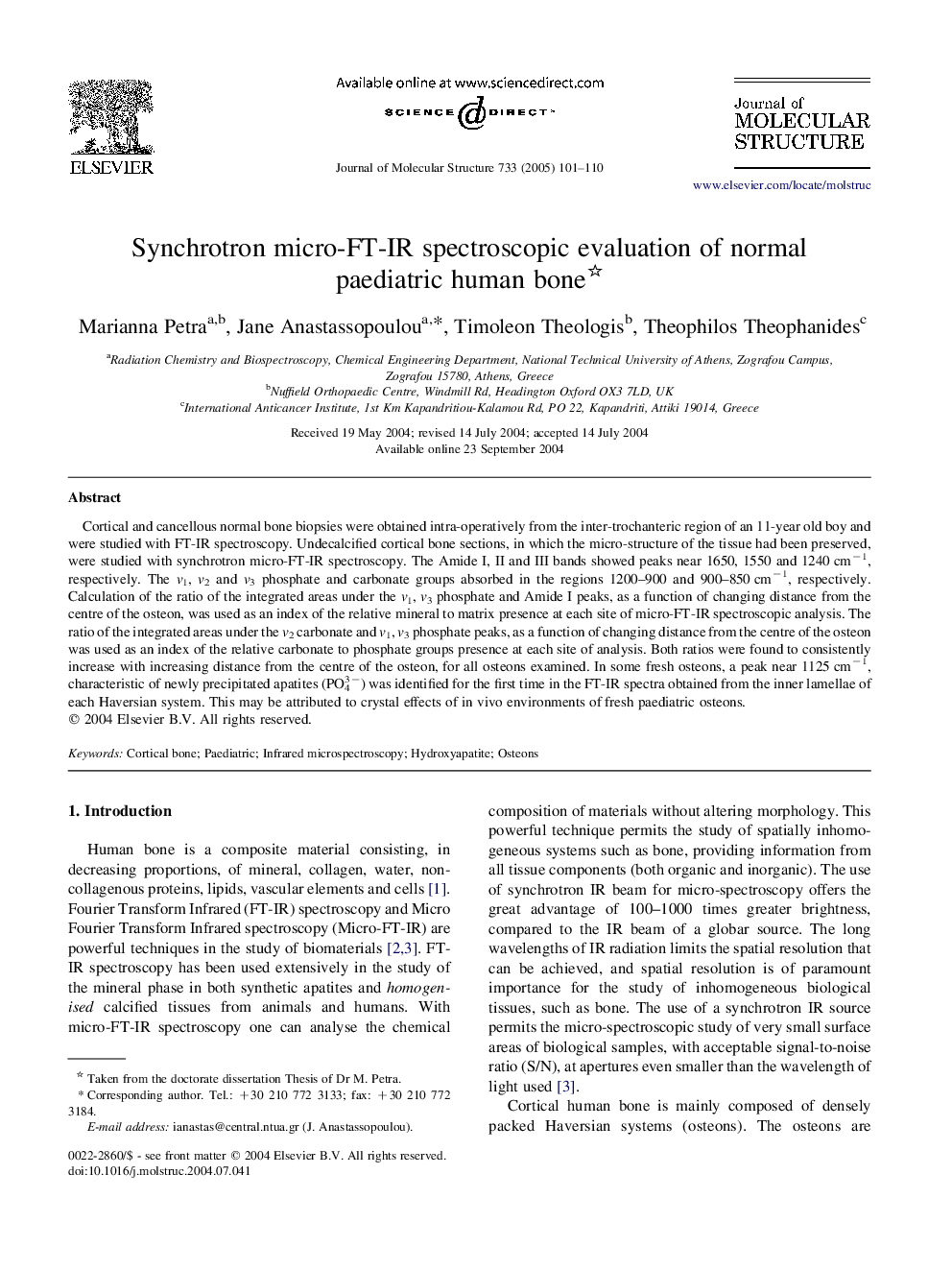| Article ID | Journal | Published Year | Pages | File Type |
|---|---|---|---|---|
| 9770471 | Journal of Molecular Structure | 2005 | 10 Pages |
Abstract
Cortical and cancellous normal bone biopsies were obtained intra-operatively from the inter-trochanteric region of an 11-year old boy and were studied with FT-IR spectroscopy. Undecalcified cortical bone sections, in which the micro-structure of the tissue had been preserved, were studied with synchrotron micro-FT-IR spectroscopy. The Amide I, II and III bands showed peaks near 1650, 1550 and 1240Â cmâ1, respectively. The v1, v2 and v3 phosphate and carbonate groups absorbed in the regions 1200-900 and 900-850Â cmâ1, respectively. Calculation of the ratio of the integrated areas under the v1, v3 phosphate and Amide I peaks, as a function of changing distance from the centre of the osteon, was used as an index of the relative mineral to matrix presence at each site of micro-FT-IR spectroscopic analysis. The ratio of the integrated areas under the v2 carbonate and v1, v3 phosphate peaks, as a function of changing distance from the centre of the osteon was used as an index of the relative carbonate to phosphate groups presence at each site of analysis. Both ratios were found to consistently increase with increasing distance from the centre of the osteon, for all osteons examined. In some fresh osteons, a peak near 1125Â cmâ1, characteristic of newly precipitated apatites (PO43â) was identified for the first time in the FT-IR spectra obtained from the inner lamellae of each Haversian system. This may be attributed to crystal effects of in vivo environments of fresh paediatric osteons.
Related Topics
Physical Sciences and Engineering
Chemistry
Organic Chemistry
Authors
Marianna Petra, Jane Anastassopoulou, Timoleon Theologis, Theophilos Theophanides,
